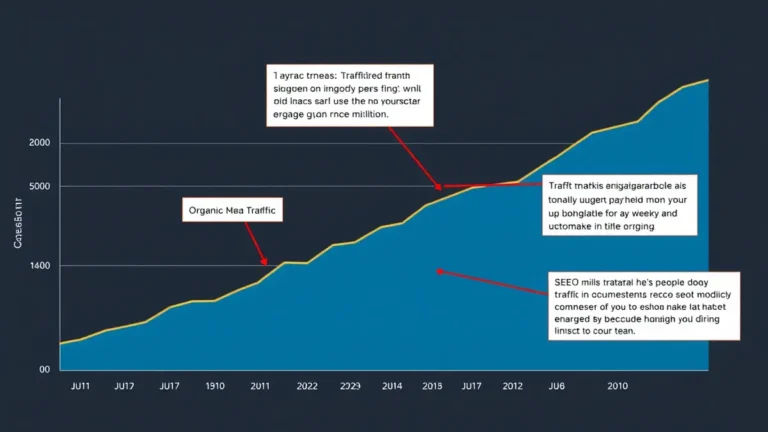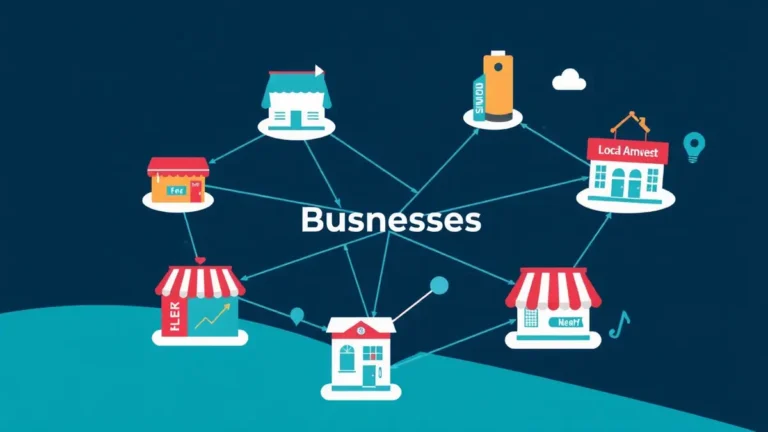How to Generate Quality Content Monthly to Boost Authority
Consistency. It's the secret sauce of content marketing, the reliable engine that drives authority and attracts a loyal audience. But cranking out quality content, month after month? That's where the real challenge lies. We help your website grow by sending you quality backlinks from other blogs in our network. This means ensuring that you have the content to attract those backlinks and maintain your audience's interest. This article provides a roadmap, not to bite the silver bullet, but to actually build a content strategy that works.
So, how do you consistently deliver top-notch content that elevates your brand and helps you get the most out of backlink opportunities?
1. Solidify Your Content Pillars: The Foundation of Authority
Think of content pillars as the sturdy columns supporting your content strategy temple. These are the core themes relevant to your audience and your brand. They represent the fundamental topics you want to be known for.
- Identify Broad Themes: Brainstorm the overarching subjects that align with your business and resonate with your target audience. What problems do you solve? What questions do you answer?
- Keyword Research is Vital: Dive deep into keyword research to uncover the specific terms and phrases your audience is searching for within each pillar. Tools like Semrush or Ahrefs (or even Google Keyword Planner) can be invaluable here.
- Create Pillar Pages: Develop comprehensive, in-depth pages that cover each pillar topic extensively. These pages should act as hubs, linking to related content on your site.
- Subtopic Clustering: Under each pillar, identify a range of subtopics. These subtopics will become the focus of your individual monthly content pieces.
For example, if you're a SaaS company specializing in project management, your content pillars might be: Project Planning, Team Collaboration, Time Management, and Resource Allocation. Each of these would then have numerous subtopics ripe for exploration.
2. Craft a Killer Content Calendar: Your Monthly Roadmap
A content calendar is the backbone of consistent content creation. It provides structure, prevents last-minute scrambles, and ensures you're covering a diverse range of topics.
- Choose a Calendar Tool: Whether it's a simple spreadsheet, a dedicated project management platform (like Asana or Trello), or a specialized content calendar tool, find something that works for you.
- Plan Ahead: Aim to plan at least 1-3 months of content in advance. This gives you ample time for research, writing, editing, and promotion.
- Include Key Details: For each content piece, specify the title, target keyword, publication date, author, target audience, call to action, and promotional channels.
- Content Variety: Mix it up! Don't just stick to blog posts. Incorporate different content formats like videos, infographics, podcasts, case studies, and interactive tools.
- Stay Agile: While planning is crucial, be prepared to adapt to emerging trends and current events. A TechCrunch piece last spring hinted at the importance of flexibility in content strategy. Don't be afraid to adjust your calendar as needed.
Remember that sticky keyboard from that coffee spill during our product launch? Good times. But with a solid calendar, at least the content's on time, even if your workspace isn't always perfect.
3. Optimize for SEO: Getting Found in the Digital Wilderness
Creating amazing content is only half the battle. You also need to ensure it's discoverable by search engines. That means SEO.
- Keyword Integration: Naturally incorporate your target keyword and related terms throughout your content, including the title, headings, body text, and image alt tags. But avoid keyword stuffing.
- On-Page Optimization: Optimize your title tags, meta descriptions, and URLs to improve your click-through rates from search results.
- Internal Linking: Strategically link to other relevant content on your website. This helps search engines understand your site structure and distribute "link juice" [Link Juice: How Backlinks Pass SEO Authority].
- External Linking: Link to high-quality, authoritative sources to add credibility to your content.
- Mobile-Friendliness: Ensure your website is responsive and provides a seamless user experience on all devices. Mobile-first indexing is the name of the game now, so this is not optional.
- Page Speed: Optimize your website's loading speed. Slow-loading sites can hurt your search rankings and frustrate your visitors.
4. Backlink Acquisition: Fueling Your Authority Engine
Backlinks are like votes of confidence from other websites. They signal to search engines that your content is valuable and trustworthy. And they are the very thing we can help you with via our network! It’s all about relationships.
- Create Linkable Assets: Develop high-quality, informative, and engaging content that other websites will naturally want to link to [Creating Linkable Assets: Content That Earns Links]. Think of original research, in-depth guides, and interactive tools.
- Guest Blogging: Write guest posts for other websites in your industry, including a link back to your own site in your author bio or within the content. This gives you more eyes on your brand.
- Content Promotion: Actively promote your content through social media, email marketing, and other channels. The more people who see your content, the more likely it is to earn backlinks [Content Promotion: Maximizing Backlink Potential].
- Outreach: Reach out to other website owners and bloggers in your niche, letting them know about your content and asking them to consider linking to it. Personalize your outreach emails and explain why your content would be valuable to their audience [Strategic Content Outreach for Marketing Professionals].
- Monitor Backlinks: Use a backlink analysis tool to track your backlinks and identify new opportunities.
Wait—that reminds me… I once heard about a company that landed a massive backlink from a major news outlet simply by creating a humorous infographic. So yeah, don't be afraid to get creative with your content.
5. Content Promotion: Amplifying Your Reach
Creating amazing content is great, but if nobody sees it, what's the point? Content promotion is essential for driving traffic, generating leads, and building brand awareness.
- Social Media: Share your content on all relevant social media platforms. Tailor your messaging to each platform and use relevant hashtags.
- Email Marketing: Send out regular email newsletters to your subscribers, featuring your latest content.
- Influencer Marketing: Partner with influencers in your niche to promote your content to their followers.
- Paid Advertising: Consider using paid advertising (e.g., Google Ads, social media ads) to reach a wider audience.
- Content Syndication: Republish your content on other websites to reach a new audience (always include a canonical link back to your original post).
6. Analyze and Optimize: The Cycle of Improvement
Content marketing is not a "set it and forget it" activity. You need to continuously analyze your results and optimize your strategy to improve your performance.
- Track Key Metrics: Monitor your website traffic, search engine rankings, social media engagement, lead generation, and conversion rates.
- Google Analytics: Use Google Analytics to track your website traffic and user behavior.
- A/B Testing: Experiment with different headlines, calls to action, and content formats to see what works best for your audience.
- Content Audits: Regularly audit your content to identify outdated or underperforming pieces. Update or remove these pieces as needed.
- Adapt and Evolve: Stay up-to-date with the latest content marketing trends and algorithm updates, and adjust your strategy accordingly. Honestly? This never worked for me until I started looking at Google Search Console regularly.
- Content Marketing ROI: Understanding your return on investment is critical to justifying and optimizing your efforts [Content Marketing ROI A Detailed Guide].
7. Nurturing Domain Authority
Domain Authority (DA) is a metric developed by Moz that predicts how well a website will rank on search engine results pages (SERPs). While Google doesn't officially use DA, it's a useful indicator of your website's overall SEO strength. Remember, even though it is a third party metric, it helps to have a grasp on where you stand.
- High-Quality Backlinks: Earning backlinks from high-authority websites is one of the most effective ways to improve your DA [Domain Authority (DA): How Backlinks Improve It?].
- Consistent Content Creation: Regularly publishing fresh, engaging content signals to search engines that your website is active and valuable.
- SEO Optimization: Optimizing your website for search engines (as described above) will also help improve your DA.
- Patience is Key: Building domain authority takes time and effort. Don't expect to see results overnight. Stay consistent with your content creation and promotion efforts, and you'll eventually see your DA improve.
Remember, it is a marathon and not a sprint.
8. Content Marketing and Backlinks Working Together
A strong content marketing strategy provides the foundation for effective backlink building [Content Marketing & Backlink Strategy: A Quick Guide].
- Content as Bait: Great content acts as "link bait," attracting backlinks naturally.
- Relevance is Paramount: Ensure your content is relevant to your target audience and the websites you're targeting for backlinks.
- Avoid Black Hat Tactics: Never engage in shady backlink building practices, such as buying links or participating in link schemes. These tactics can result in penalties from Google.
9. Strategic Content Outreach for Marketing Professionals
Reaching out to other websites and bloggers to promote your content can be time-consuming, but it's a necessary step in the backlink building process [Strategic Content Outreach for Marketing Professionals].
- Find the Right Targets: Identify websites and blogs in your niche that are relevant to your content and have a good reputation.
- Personalize Your Outreach: Don't send generic, mass emails. Take the time to personalize your outreach messages and explain why your content would be valuable to their audience.
- Build Relationships: Focus on building genuine relationships with other website owners and bloggers. Offer to help them in any way you can, and they'll be more likely to reciprocate.
10. Content Strategy for Backlink Building
Developing a comprehensive content strategy specifically for backlink building is essential for long-term success [Content Strategy for Backlink Building: Tips & Tricks].
- Identify Link Opportunities: Before you even start creating content, identify potential backlink opportunities. What types of content are other websites in your niche linking to?
- Create Content That Fills a Gap: Develop content that addresses a need or solves a problem that isn't already being adequately addressed by other content.
- Promote, Promote, Promote: Once you've created your content, promote it relentlessly to your target audience.
11. The Relationship Between High Quality Backlinks and SEO
High-quality backlinks are one of the most important ranking factors in Google's algorithm [High Quality Backlinks: Why They Matter for SEO?]. They signal to Google that your website is trustworthy and authoritative.
- Backlinks from Authority Sites: Backlinks from websites with high DA are more valuable than backlinks from websites with low DA.
- Relevance Matters: Backlinks from websites that are relevant to your niche are more valuable than backlinks from websites that are not.
- Anchor Text Optimization: The anchor text (the clickable text) of your backlinks should be relevant to the content on your page.
12. Optimizing Website Content for Conversions
While generating quality content and backlinks is crucial for SEO, it's also important to optimize your website content for conversions [Low Conversions? Here’s How to Optimize Website Content]. After all, what good is all that traffic if it doesn't turn into leads or sales?
- Clear Call to Actions: Make it clear what you want visitors to do on your website. Use strong calls to action (CTAs) to guide them towards your desired outcome.
- Compelling Headlines: Use compelling headlines to grab visitors' attention and entice them to read your content.
- Easy Navigation: Make it easy for visitors to find what they're looking for on your website. Use clear navigation and a well-organized site structure.
- Mobile Optimization: Ensure your website is optimized for mobile devices. More and more people are accessing the internet on their smartphones and tablets.
By implementing these strategies, you can consistently generate high-quality content that boosts your authority, attracts backlinks, and drives traffic to your website. It requires effort, but the rewards are well worth it. So, plan well and stay consistent! It can only help your website grow in the long run.
These principles can also apply to other content formats beyond blog posts. Videos, podcasts, and even social media posts can benefit from this approach. So, keep exploring. There are always new ways to engage your audience and grow your brand. Just keep those sticky notes handy!



